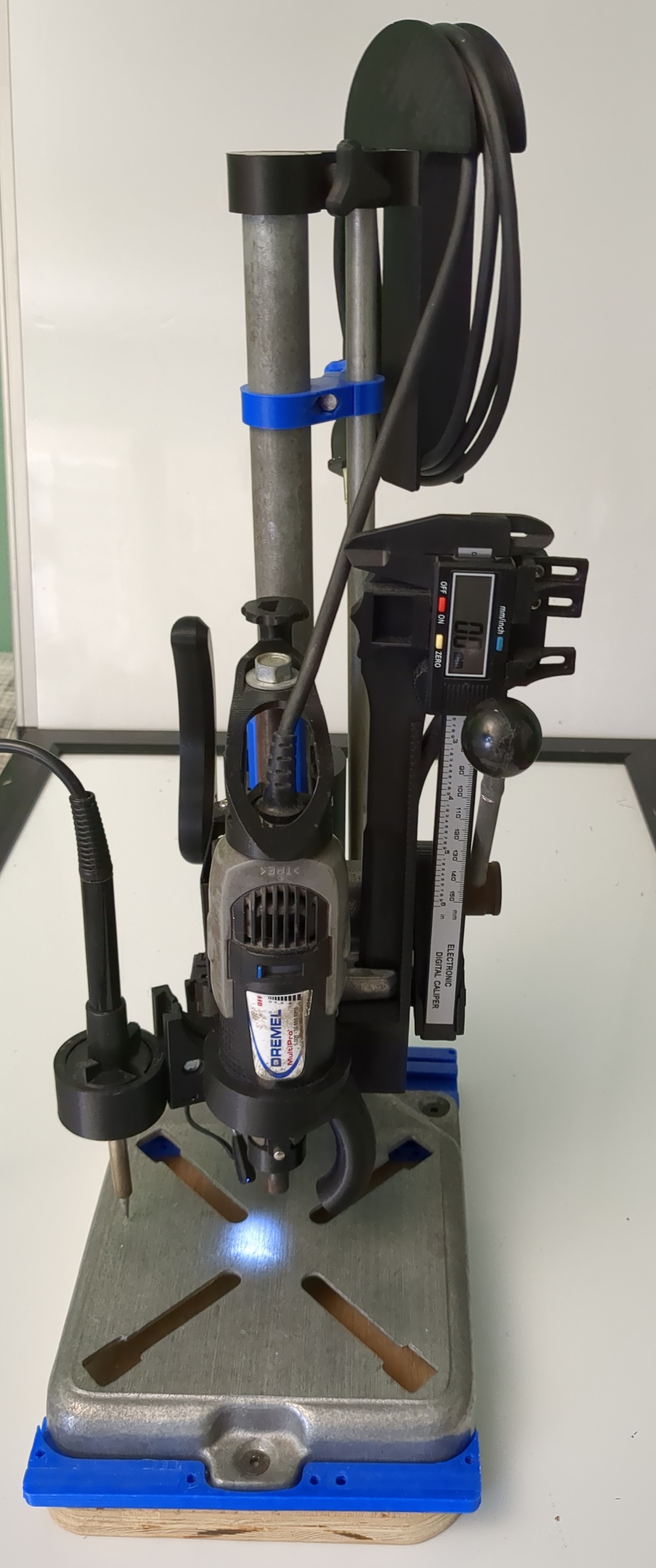When you design several features you don't need and still haven't used...
Some are very useful though. Every possible DoF has its own adjustable end stops; not super useful yet. The extra rear rod is the stop contact for left and right rotation of the head. The ability to replace the heatset insert iron holder and modularity of the entire design; is not super useful. A ton of mods to tune out and preload all of the backlash is super useful. I can drill 0.4mm holes without breaking bits... at least not due to the press mechanism backlash. There is a single LED light with a lipo battery, charge controller, and CMOS 555 that acts as a single point source light guide. If you are not aware, a single point source light will cast a shadow from the drill bit showing its exact location reliably; super useful. The dial calipers are attached as a digital readout. It is 0.1mm repeatable, maybe a little better but not much. I mostly intended to use it for heatset inserts but still have not done so. The caliper mount is part of the press alignment mechanism too. The dremel is secured in a threaded lower mount and with a ring clamp at the back of the body. There is a shroud around the dremel that redirects the motor exhaust output to blow away dust while drilling. There are also several mount points integrated inside and outside of the base of the unit and intended for additional work holding jigs (not pictured, used, or well developed).
These are all custom designs fitted to the specific parts all the way down to things like casting defects unique to this unit. This is not the kind of project that should be shared or posted publicly as a printable project. You would never be able to replicate this based on the meshed files even if you had the same models of parts. Sharing this is only intended for design inspiration.
